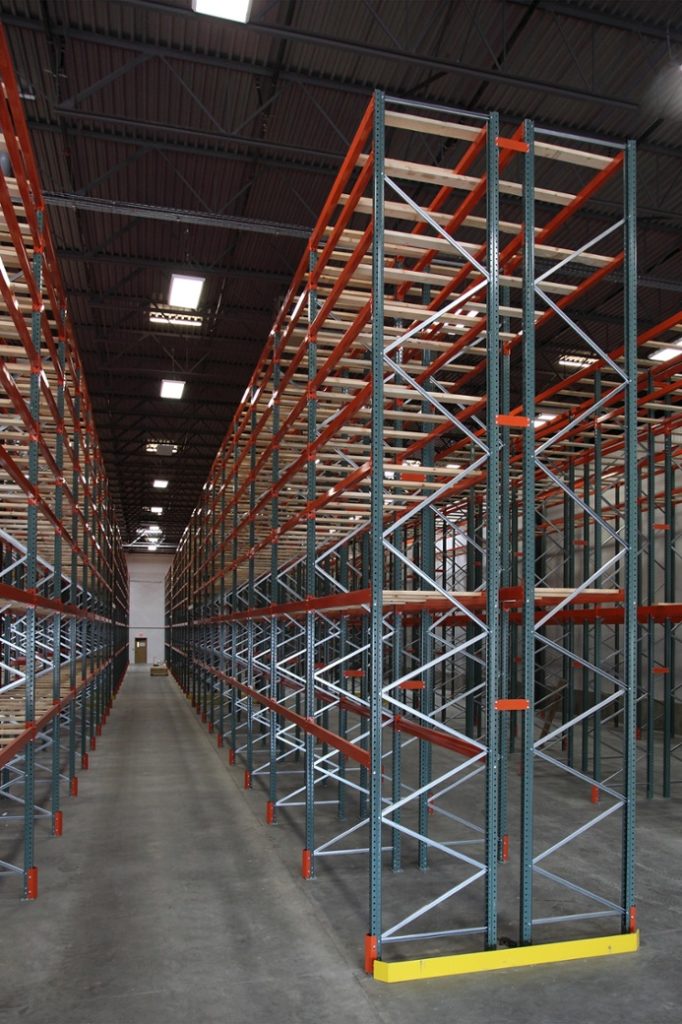In the following document, I put together basic information with everything you need to know about planning and executing a basic selective rack pallet racking storage system. In addition, I included some local specific information about installing pallet racking in British Columbia.

Racking is a relatively common storage product, typically utilized to increase cubic capacity in a warehouse. We are going to explore some of the basic terminology associated with pallet racking, and some critical information required to install racking safely and in compliance with local bylaws.
Let’s assume we are storing pallets measuring 40” w x 48” d x 50”h. Our goal is to store as many of these pallets in a given area as possible. This example is going to assume our inventory is quite varied, so we have many pallets holding different products.This results in a basic selective rack layout, which give us as many varied pick locations as possible. If we had many pallets holding the same product,we might design a higher density, lower selectivity system through the use of mobile, pushback, or drive-in racking technology.Today, we are just going to deal with basic, selective racking.
A bay of selective, single deep pallet racking has vertical frames (two) and horizontal beams. The number of beams will be determined by how many levels you are planning to incorporate into your bay of racking. If, for example, you had a 16’ frame, and you wanted to utilize as much of the frame as possible with the pallet size previously mentioned, you would end up with three beam levels (each beam level includes two beams, one front and one back), for a total of four storage levels when you include the floor. Typically, a beam size for this application would measure 96” in length, to allow for two pallets per level. The height of the beam is determined by weight capacity required. Therefore, the more weight you are storing, the larger your beam will become.
This bay of selective racking is going to give us a total storage capacity of eight pallets (two pallets on floor, and three beam levels with two pallets/beam level for a total of eight pallets). Should you require storage for more than eight pallets, you would use add-on bays to expand your capacity. Each add-on bay would include one frame, along with six beams.
Code Compliancy/Seismic Considerations in British Columbia
After addressing the issue of what kind and how much pallet racking is required to satisfy your storage capacity requirements, attention must be paid to the building code and seismic requirements involved in installing your pallet racking.
As a rule, any racking that stands over 96” in height must be engineered and certified for seismic suitability. In addition, attention must be paid to the fire suppression requirements for your specific commodity, or goods stored.
If you have any questions regarding Selective Rack or any other type of pallet rack, please contact us and we will be happy to assis you.

